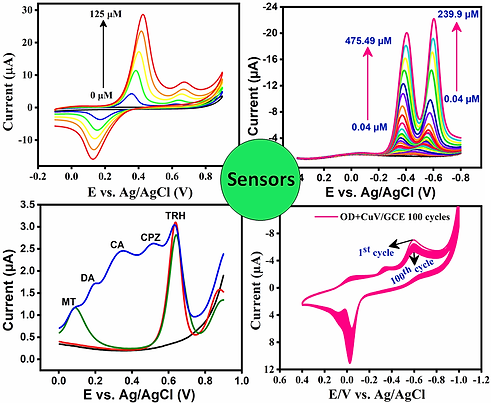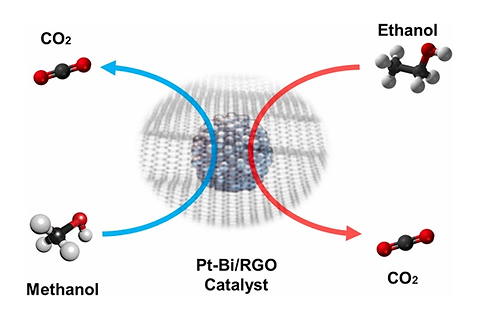Expertise and Research Interests
Materials Chemistry & Electrochemistry & Analytical Chemistry




Nanomaterials
Nanomaterials (NMs) design is becoming increasingly important in nanotechnology for both academic studies and potential industrial uses. NMs deliver high surface area, excellent porous structure, more catalytic active sites, and increased surface activity, which significantly impacts adsorption and chemical reactions at the surface or interfaces in electrochemical sensors and energy-based applications.

Electrochemical sensors
Electrochemical sensors work by redoxing analyte over the working electrode surface and providing an electrical signal proportional to the concentration of analyte. The electrochemical sensing system is suggested as an alternative method owing to its cost-effectiveness, fast response, portability, excellent selectivity, ease of handling, high sensitivity, low detection limit, and simultaneous detection of an analyte compared to other analytical methods.



Electrochemical supercapacitors
Electrochemical energy storage systems (ESSs) have received a lot of attention owing to their advantage of green environmental preservation, large economic rewards, and exceptional energy storage impacts. Supercapacitors (SCs) are one of the most promising energy storage devices among ESSs, with features such as high power density, long cycling stability, fast charging-discharging capability, and reliability. Because of these distinctive features, researchers are becoming more interested in the potential uses of SCs in applications including power plant management, electric vehicles, and portable products.

Electrochemical alcohol fuel cells
Fuel cells are electrochemical devices that convert chemical energy directly into electrical energy with high efficiency and low environmental impact. Direct alcohol fuel cells (DAFCs) have gained significant attention due to their availability, affordability, low toxicity, ease of storage and transport, and high energy densities of alcohols: 8.01 kWh kg−1 for ethanol and 6.09 kW h kg−1 for methanol.
